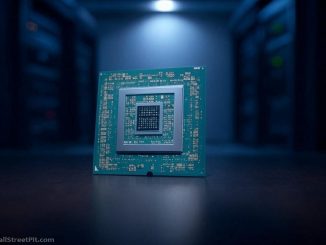- Cadence Design Systems (CDNS) shares fell over six points to $256.16 in Friday trading, despite Morgan Stanley (MS) naming it the top pick in semiconductor design, replacing Arm Holdings (ARM), due to its strong operating leverage, recurring revenues, and record backlog.
- Morgan Stanley cut Arm’s (ARM) price target from $175 to $150, citing litigation risks and slow v9 adoption, while Synopsys (SNPS) remains overshadowed by its Ansys (ANSS) acquisition, though its AgentEngineer platform shows promise.
- Despite sector declines since July 2024 from AI spending fears and weak China demand, Morgan Stanley sees 2025 as a transition year, with growth expected in 2026 driven by an expanding EDA market and improving macroeconomic conditions.

Cadence Design Systems Inc. (CDNS) saw its shares dip more than six points to $256.16 in Friday trading, a surprising move given Morgan Stanley’s (MS) decision to crown it the top pick in the semiconductor design and intellectual property sector, replacing Arm Holdings (ARM). The bank praised Cadence for its robust operating leverage, bolstered by high recurring revenues and a record backlog, positioning it for stronger growth in a sector that’s been battered since its July 2024 peak. Morgan Stanley’s analysts see Cadence as a standout amid industry turbulence, driven by fears of slowing AI-related spending, shaky demand from China, and limited foundry uptake beyond TSMC, yet they argue the sector’s long-term value remains intact despite these short-term jitters.
In contrast, Arm Holdings has stumbled, with Morgan Stanley slashing its price target from $175 to $150 due to litigation risks, sluggish adoption of its v9 architecture, and uncertainty in China’s market. While Arm’s licensing model and potential pivot to chipmaking still hold promise, Cadence’s stability has taken the spotlight. Synopsys (SNPS), another player in the space, retains an ‘Overweight’ rating but is bogged down by its pending acquisition of Ansys (ANSS), though its nascent AI-driven AgentEngineer platform hints at future potential. Morgan Stanley views 2025 as a transitional year for the sector, with headwinds like softening AI sentiment and macroeconomic uncertainty in play, but optimism shines through for 2026 and beyond. Analysts point to an expanding electronic design automation (EDA) market, fueled by recovering AI enthusiasm, improving demand from China, and a brighter economic outlook, as key drivers that could lift Cadence and its peers to new heights.
WallStreetPit does not provide investment advice. All rights reserved.
- Bulenox: Get 45% to 91% OFF ... Use Discount Code: UNO
- Risk Our Money Not Yours | Get 50% to 90% OFF ... Use Discount Code: MMBVBKSM
Disclaimer: This page contains affiliate links. If you choose to make a purchase after clicking a link, we may receive a commission at no additional cost to you. Thank you for your support!





Leave a Reply